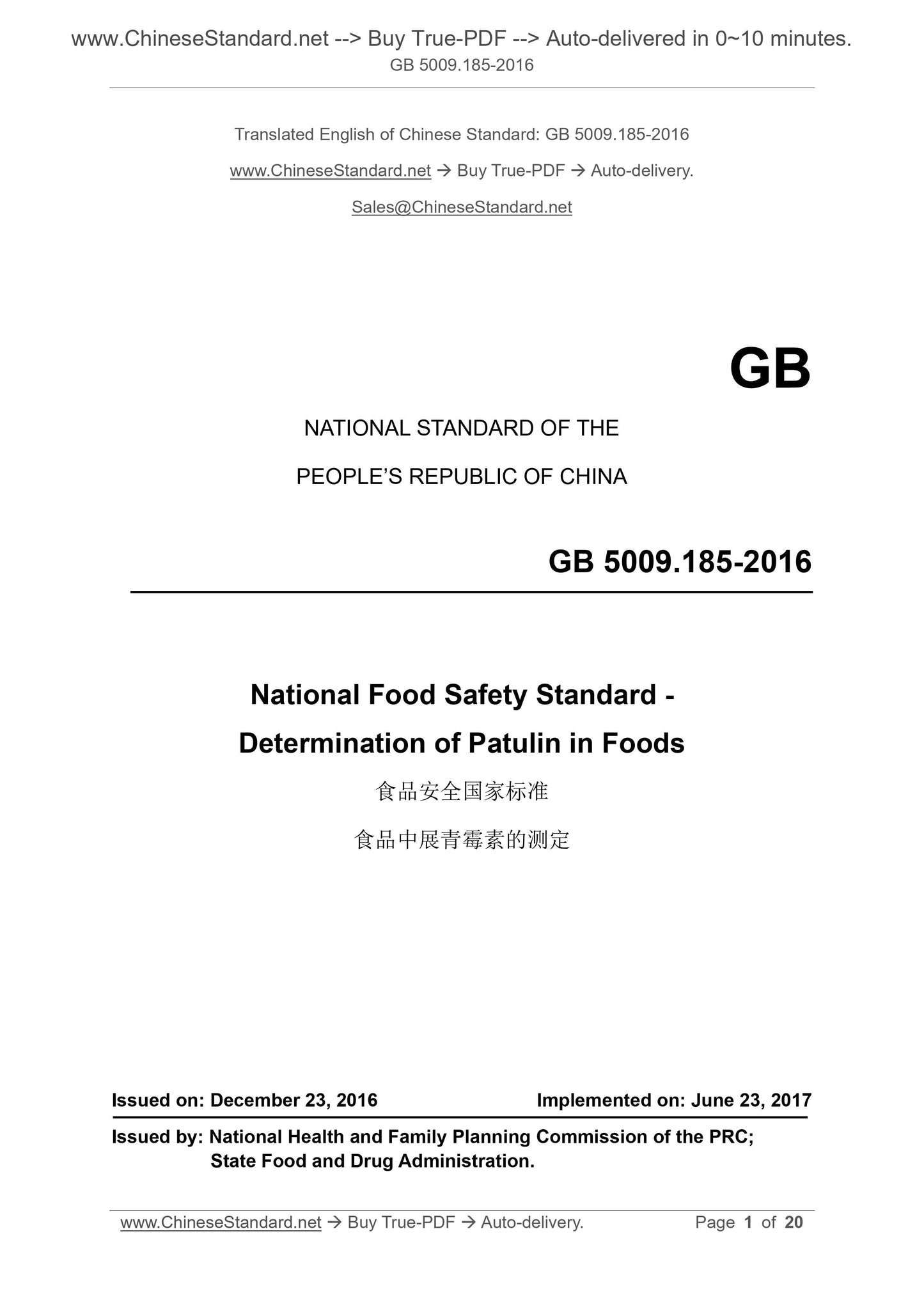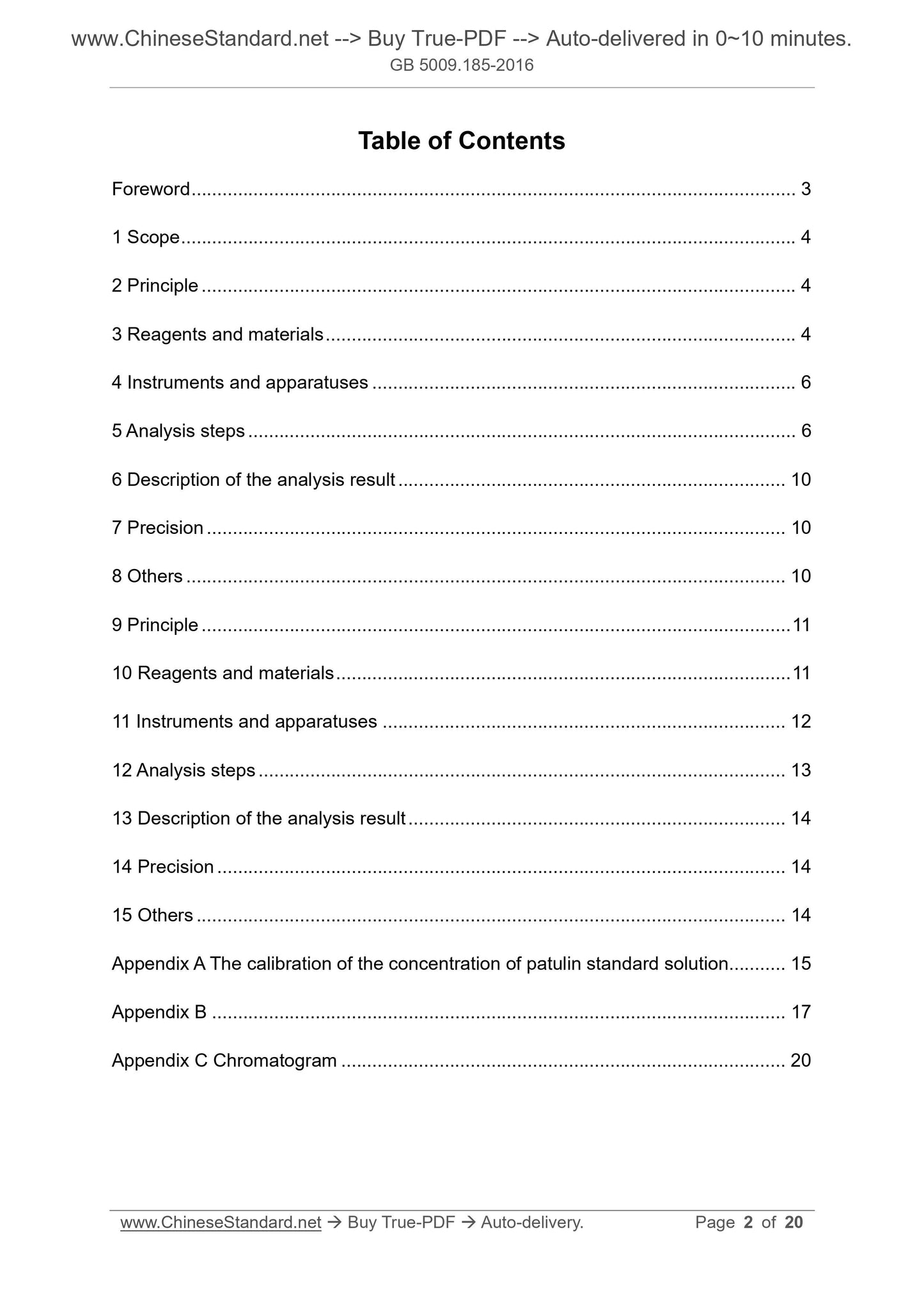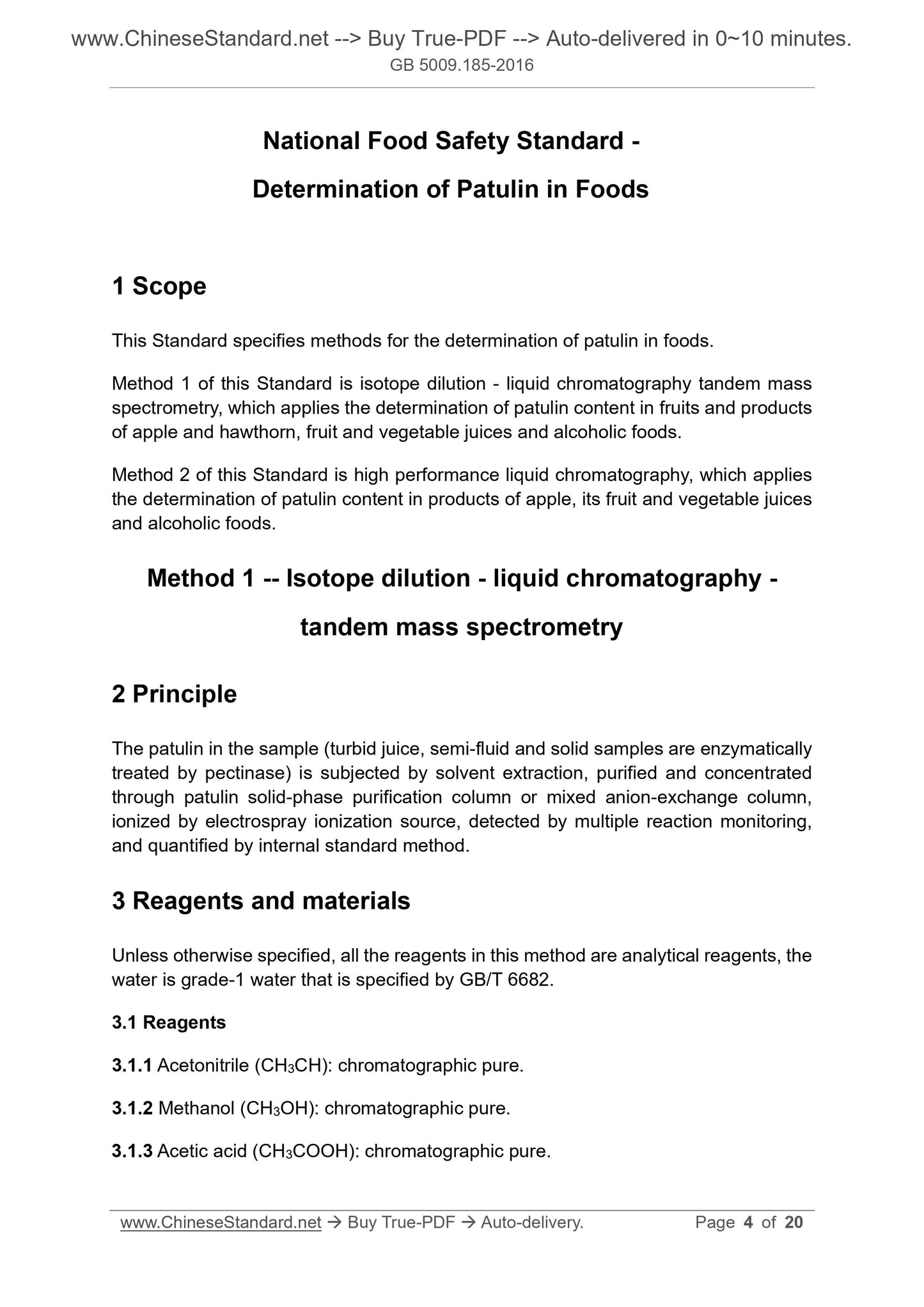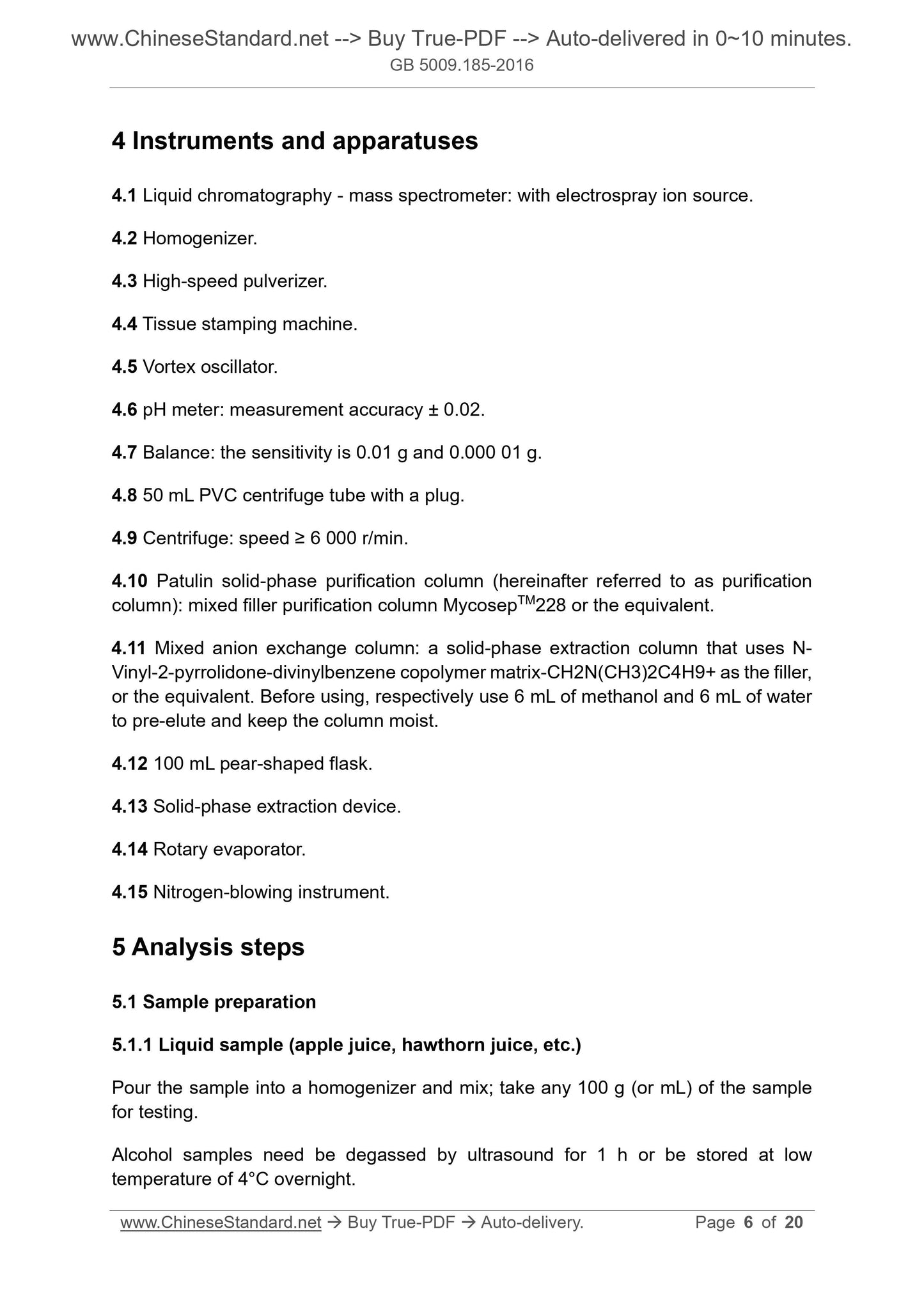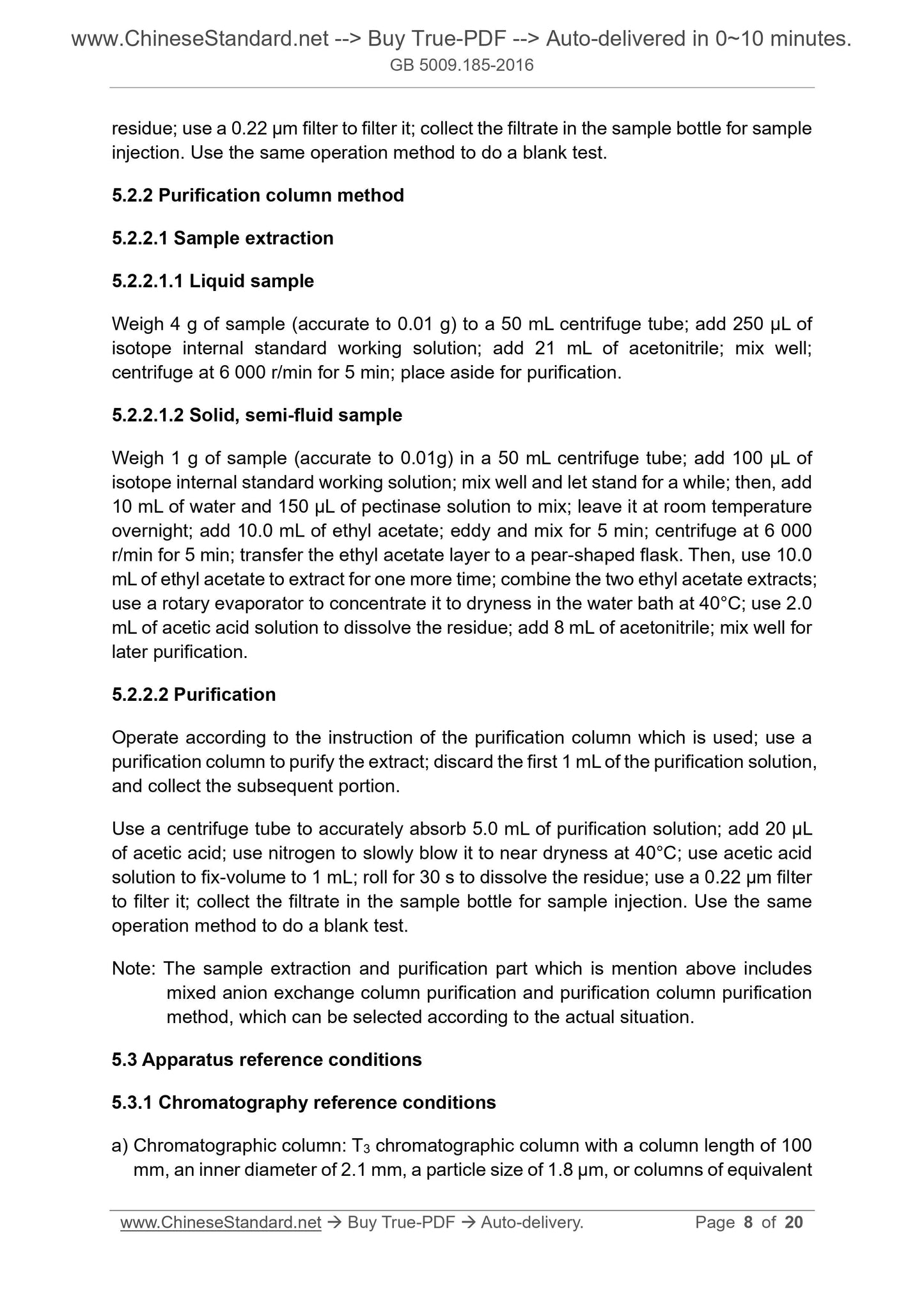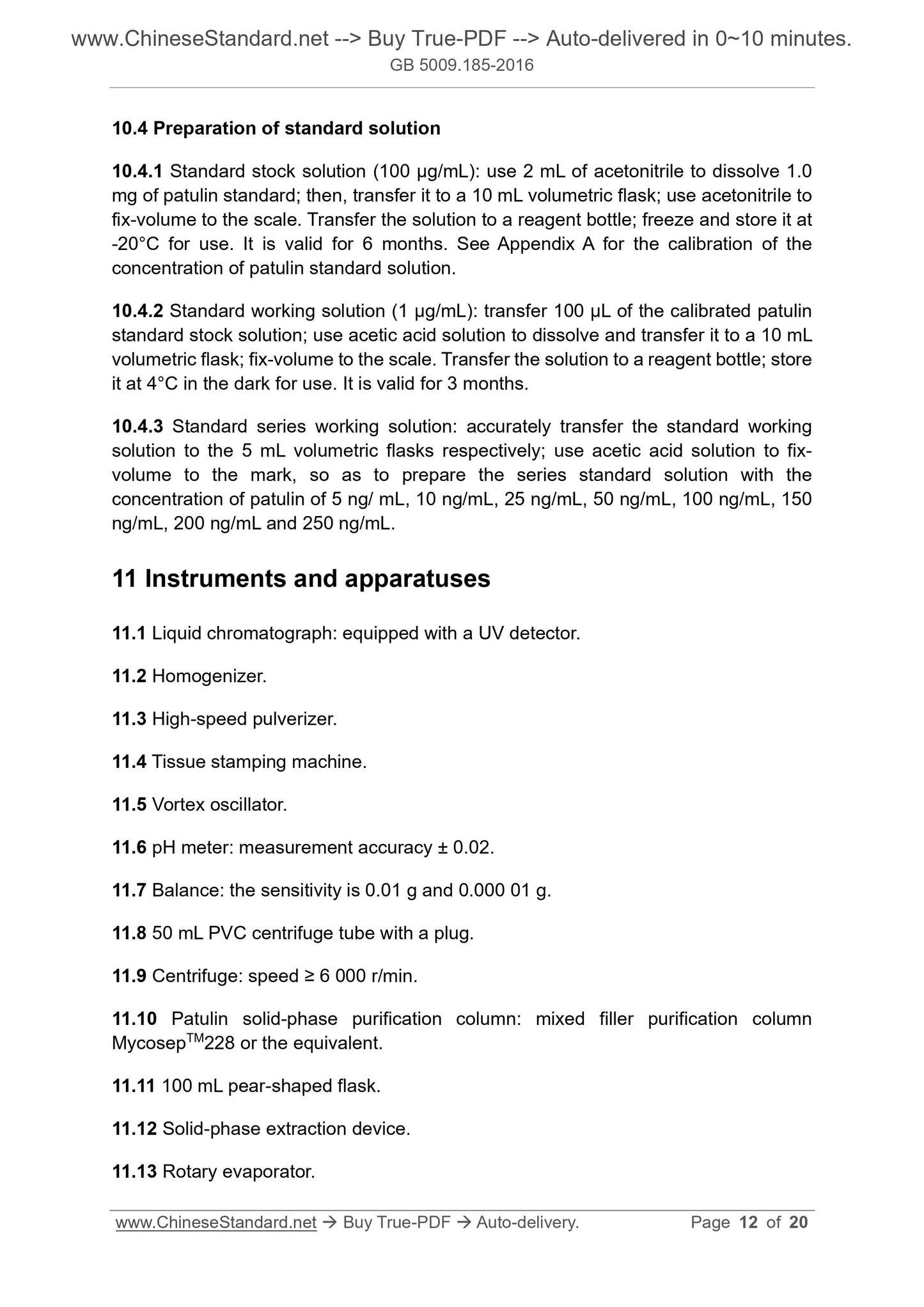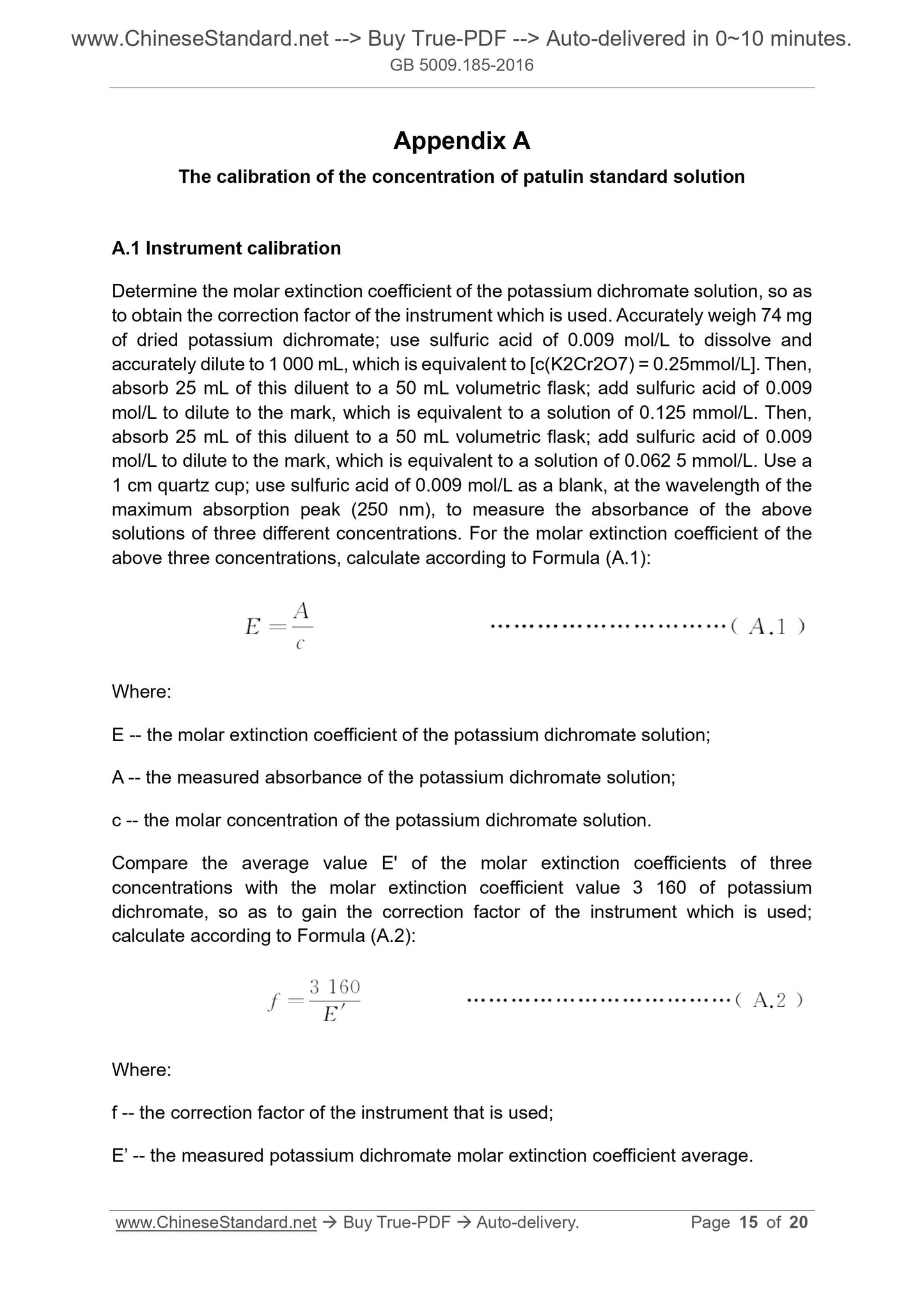1
/
of
7
www.ChineseStandard.us -- Field Test Asia Pte. Ltd.
GB 5009.185-2016 English PDF
GB 5009.185-2016 English PDF
Regular price
$150.00
Regular price
Sale price
$150.00
Unit price
/
per
Shipping calculated at checkout.
Couldn't load pickup availability
GB 5009.185-2016: National food safety standard - Determination of Patulin in Foods
Delivery: 9 seconds. Download (and Email) true-PDF + Invoice.Get Quotation: Click GB 5009.185-2016 (Self-service in 1-minute)
Newer / historical versions: GB 5009.185-2016
Preview True-PDF
Scope
This Standard specifies methods for the determination of patulin in foods.Method 1 of this Standard is isotope dilution - liquid chromatography tandem mass
spectrometry, which applies the determination of patulin content in fruits and products
of apple and hawthorn, fruit and vegetable juices and alcoholic foods.
Method 2 of this Standard is high performance liquid chromatography, which applies
the determination of patulin content in products of apple, its fruit and vegetable juices
and alcoholic foods.
Method 1 -- Isotope dilution - liquid chromatography -
tandem mass spectrometry
Basic Data
| Standard ID | GB 5009.185-2016 (GB5009.185-2016) |
| Description (Translated English) | National food safety standard - Determination of Patulin in Foods |
| Sector / Industry | National Standard |
| Classification of Chinese Standard | C53 |
| Word Count Estimation | 14,197 |
| Date of Issue | 2016-12-23 |
| Date of Implementation | 2017-06-23 |
| Older Standard (superseded by this standard) | GB/T 5009.185-2003; NY/T 1650-2008; SN/T 1859-2007 Partial; SN/T 2008-2007; SN/T 2534-2010 |
| Regulation (derived from) | National Health and Family Planning Commission Notice No.17 of 2016 |
| Issuing agency(ies) | National Health and Family Planning Commission of the People's Republic of China, State Food and Drug Administration |
Share
